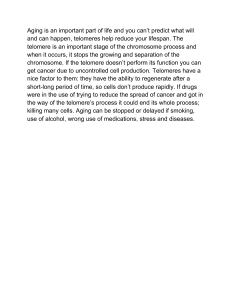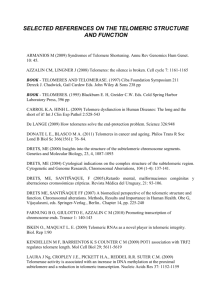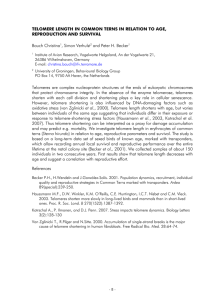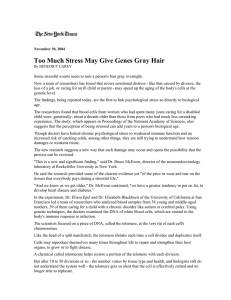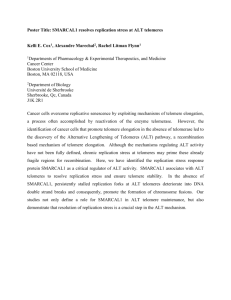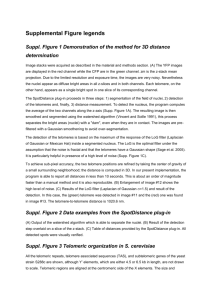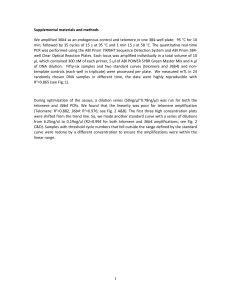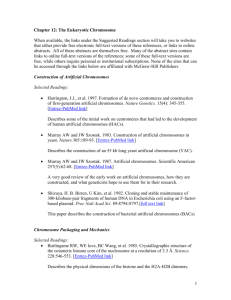Generating unique chromosome sequencing probes to observe
advertisement
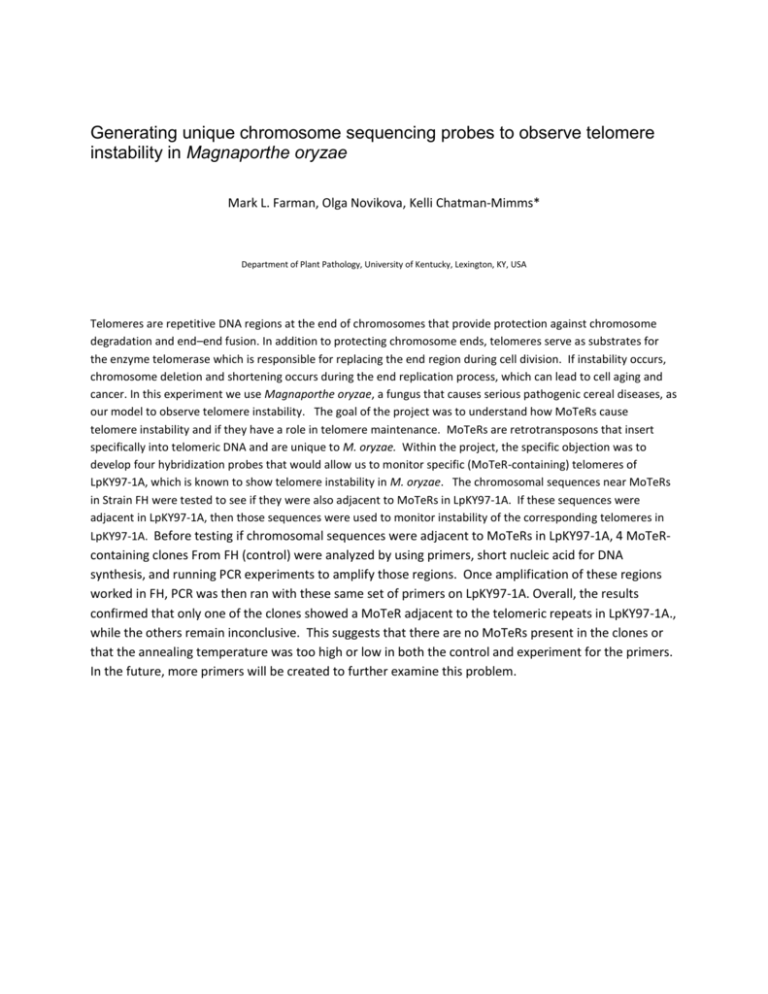
Generating unique chromosome sequencing probes to observe telomere instability in Magnaporthe oryzae Mark L. Farman, Olga Novikova, Kelli Chatman-Mimms* Department of Plant Pathology, University of Kentucky, Lexington, KY, USA Telomeres are repetitive DNA regions at the end of chromosomes that provide protection against chromosome degradation and end–end fusion. In addition to protecting chromosome ends, telomeres serve as substrates for the enzyme telomerase which is responsible for replacing the end region during cell division. If instability occurs, chromosome deletion and shortening occurs during the end replication process, which can lead to cell aging and cancer. In this experiment we use Magnaporthe oryzae, a fungus that causes serious pathogenic cereal diseases, as our model to observe telomere instability. The goal of the project was to understand how MoTeRs cause telomere instability and if they have a role in telomere maintenance. MoTeRs are retrotransposons that insert specifically into telomeric DNA and are unique to M. oryzae. Within the project, the specific objection was to develop four hybridization probes that would allow us to monitor specific (MoTeR-containing) telomeres of LpKY97-1A, which is known to show telomere instability in M. oryzae. The chromosomal sequences near MoTeRs in Strain FH were tested to see if they were also adjacent to MoTeRs in LpKY97-1A. If these sequences were adjacent in LpKY97-1A, then those sequences were used to monitor instability of the corresponding telomeres in LpKY97-1A. Before testing if chromosomal sequences were adjacent to MoTeRs in LpKY97-1A, 4 MoTeR- containing clones From FH (control) were analyzed by using primers, short nucleic acid for DNA synthesis, and running PCR experiments to amplify those regions. Once amplification of these regions worked in FH, PCR was then ran with these same set of primers on LpKY97-1A. Overall, the results confirmed that only one of the clones showed a MoTeR adjacent to the telomeric repeats in LpKY97-1A., while the others remain inconclusive. This suggests that there are no MoTeRs present in the clones or that the annealing temperature was too high or low in both the control and experiment for the primers. In the future, more primers will be created to further examine this problem.
